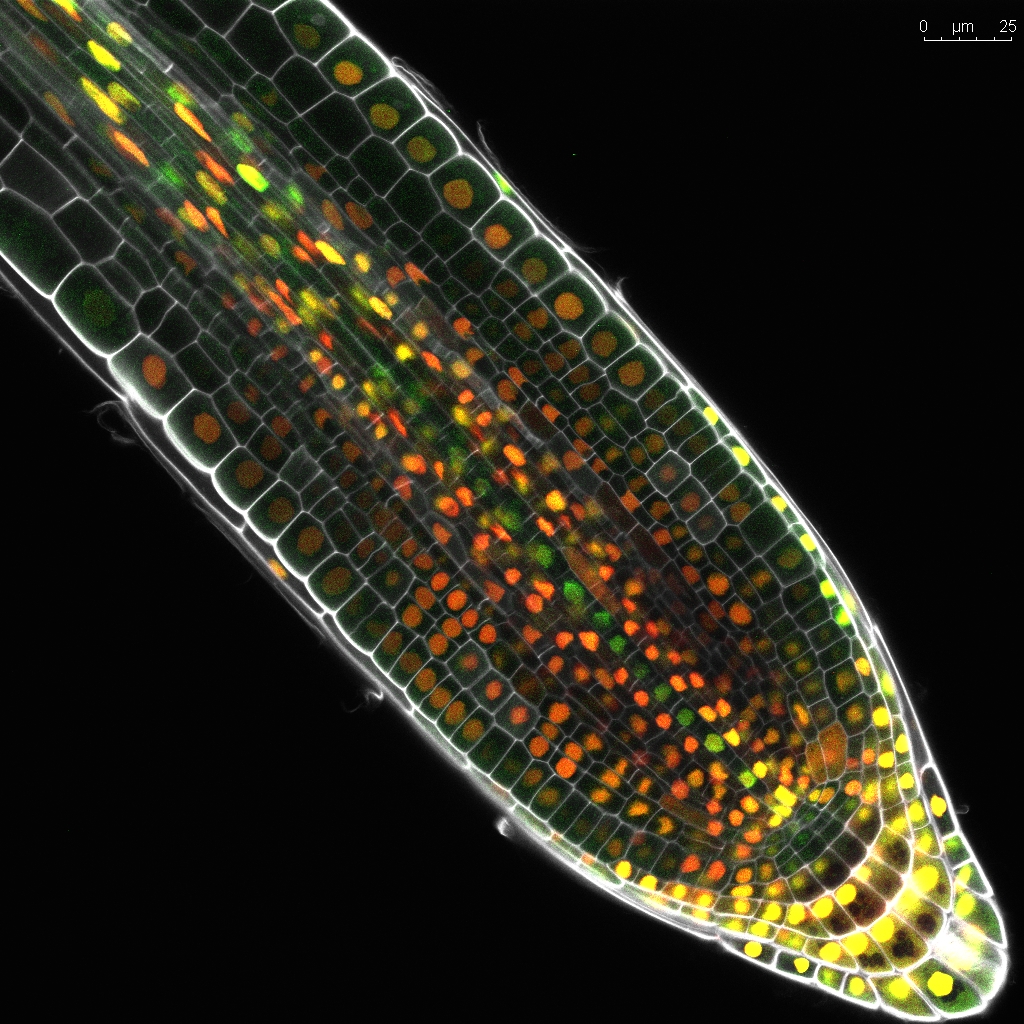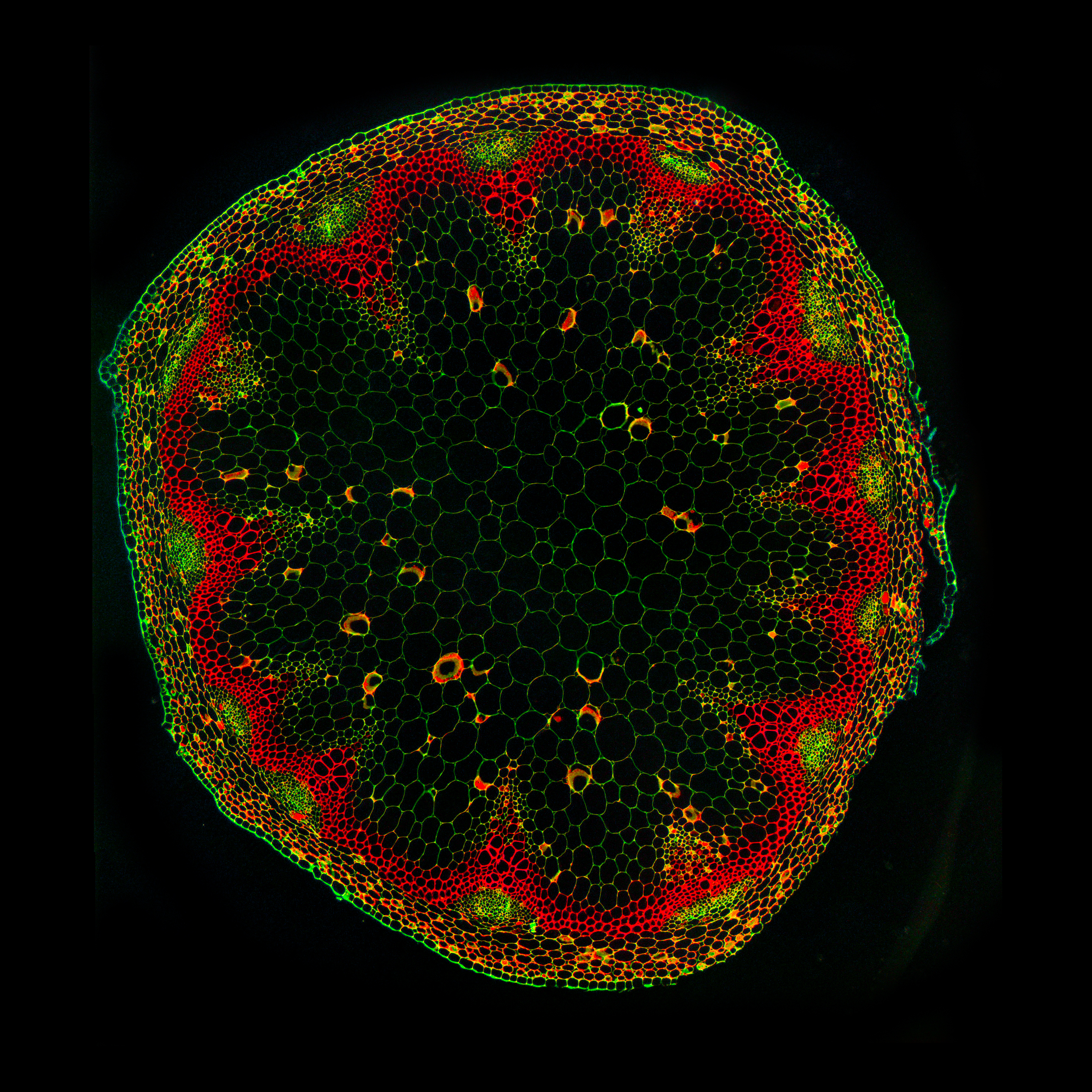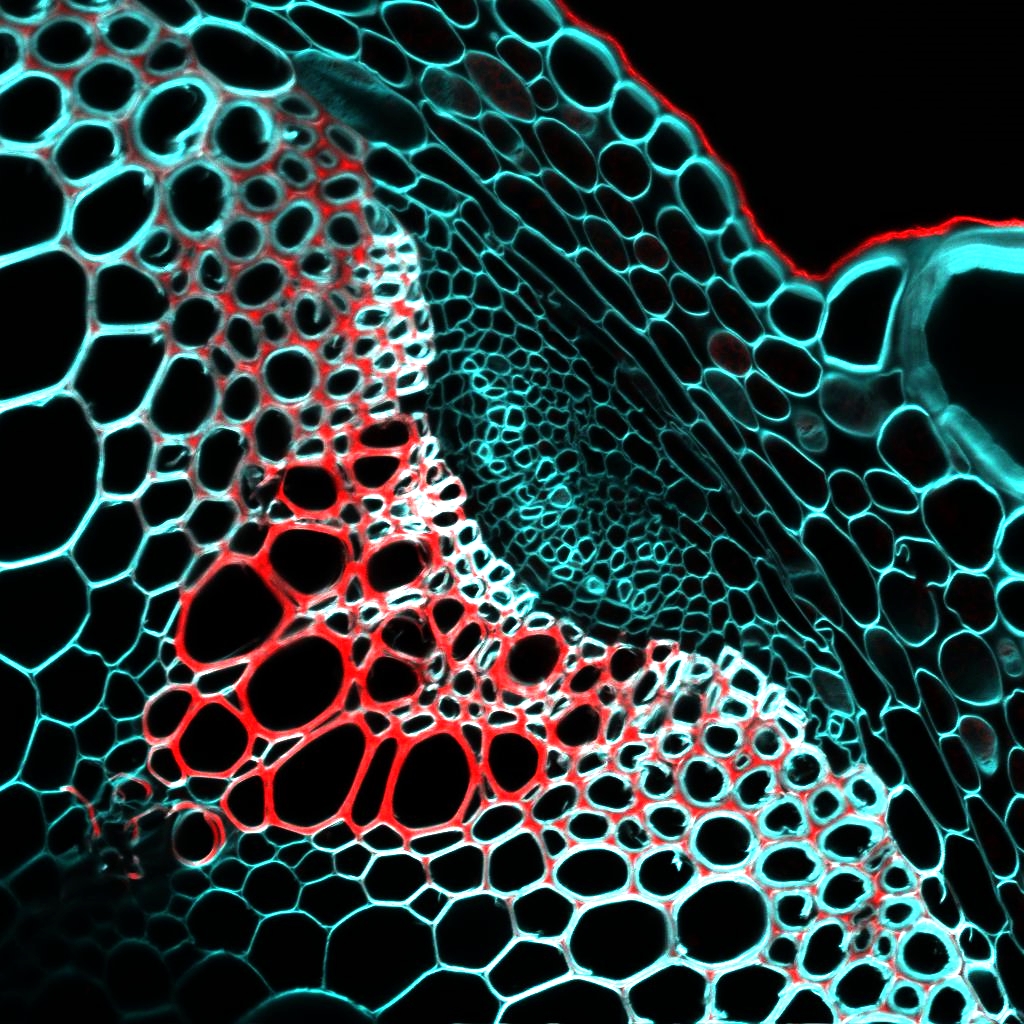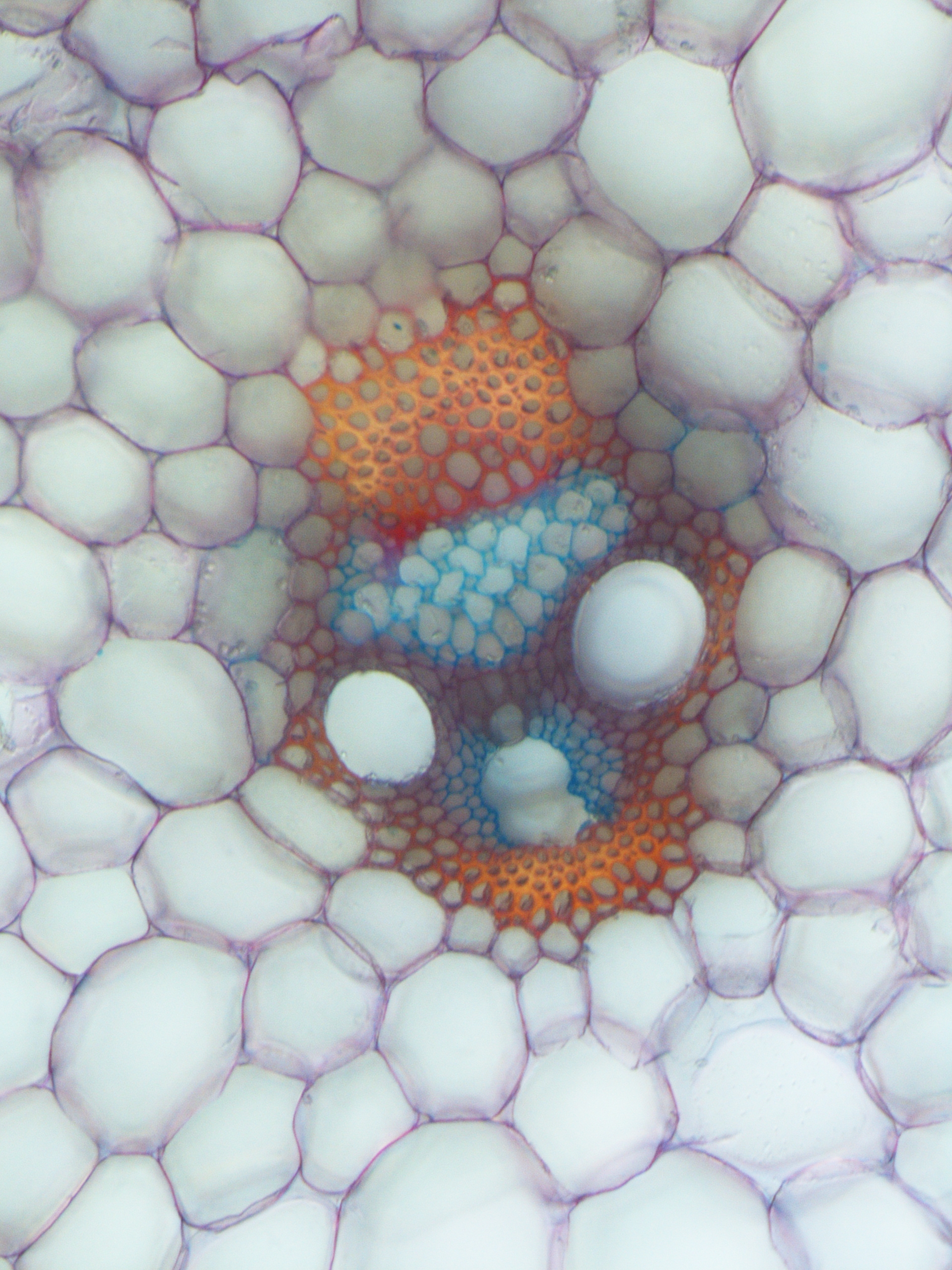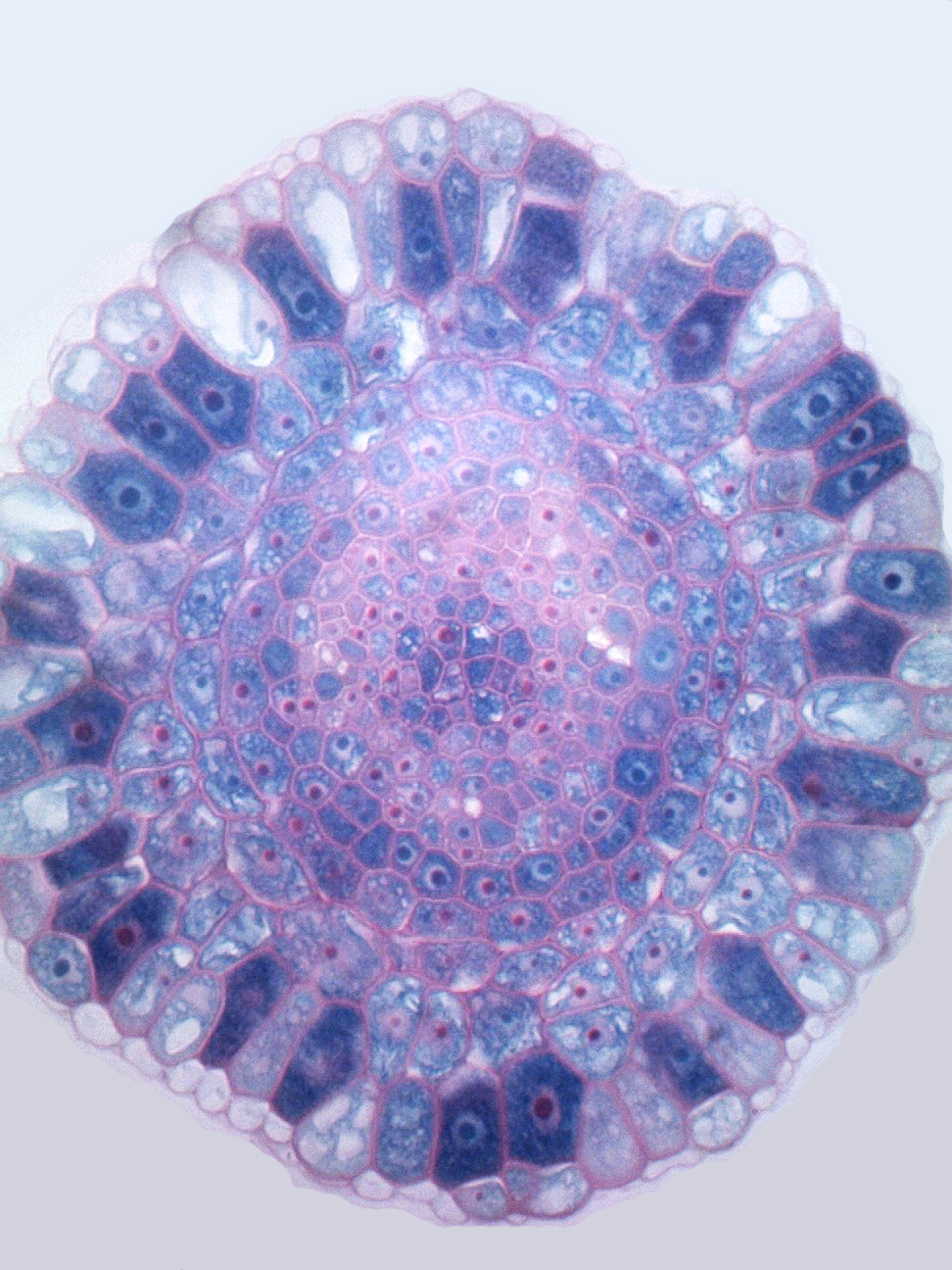The vasculature of plants consist of conducting tissues (phloem and xylem), a meristematic tissues (procambium or cambium) and the pericycle which surrounds the other tissues, protects and functionally assists the conducting cells. Vascular cells are present in all plant organs, however their position and organization varies depending on the organ and age. Within young roots of Arabidopsis, the vasculature is located in the central cylinder and exhibits a bilateral arrangement.
Xylem serves an important dual role during growth and development of plants as it is required for both physical support and water transport. Xylem cells feature distinct characteristics which allow for optimal water transport in tracheary element and their cell walls to withstand the resulting pressure. To acquire these features, xylem follows a complex developmental trajectory during which meristematic precursor cells differentiate into elongated, fortified and hollow xylem vessels. The complexity and of these cellular and morphological changes is reflected in the regulatory network of xylem formation. Numerous genes, phytohormones, signaling lipids and peptides are known to commonly contribute to xylem development.

We aim to expand our knowledge about the developmental regulators controlling xylem formation and to identify and functionally characterize novel regulators. By combining single cell RNA-sequencing (scRNA-seq) with Fluorescence-Activated Cell Sorting (FACS), we seek to generate a high resolution dataset, a powerful tool which allows us to infer and subsequently experimentally validate xylem cell types and their developmental paths.
The xylem research team consists of dr. Claudia von der Mark, Akshay Gokulendran Nair and Wouter Verstappe. Work on this research topic is generously funded by the Research Foundation – Flanders (FWO grant (FWO grants 1221424N, G000822N and G0D0515N), the ERC CoG (101043257 - PIPELINES) project and by the Deutsche Forschungsgemeinschaft (DFG, German Research Foundation – project number: 527041612).



